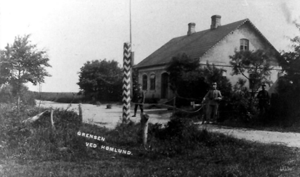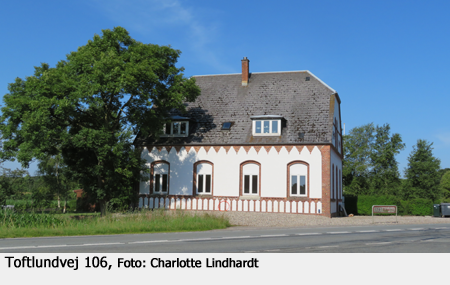The German customs office in Fjaersted
 From 1865-1873, the German customs office was situated in Hoemlund. Fjerstedt Zollkontrolle as it was called was housed in an inn, Spandet Kro on Skolevænge 3 from 1865-1873. The customs office was subsequently moved closer to the border, and in 1896 a new building was erected on Toftlundvej 86.
From 1865-1873, the German customs office was situated in Hoemlund. Fjerstedt Zollkontrolle as it was called was housed in an inn, Spandet Kro on Skolevænge 3 from 1865-1873. The customs office was subsequently moved closer to the border, and in 1896 a new building was erected on Toftlundvej 86.


